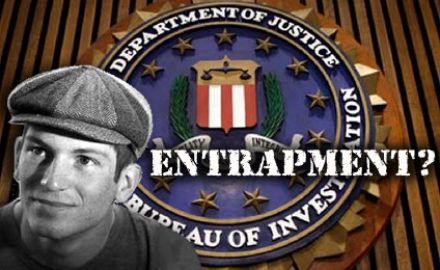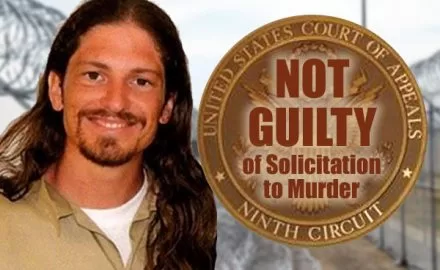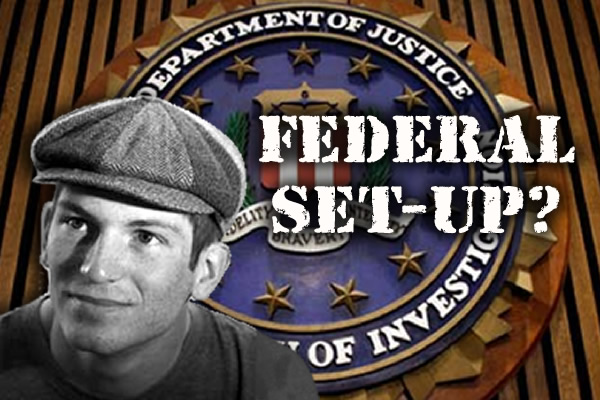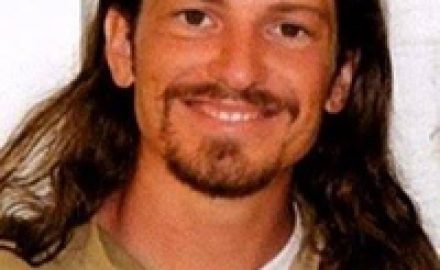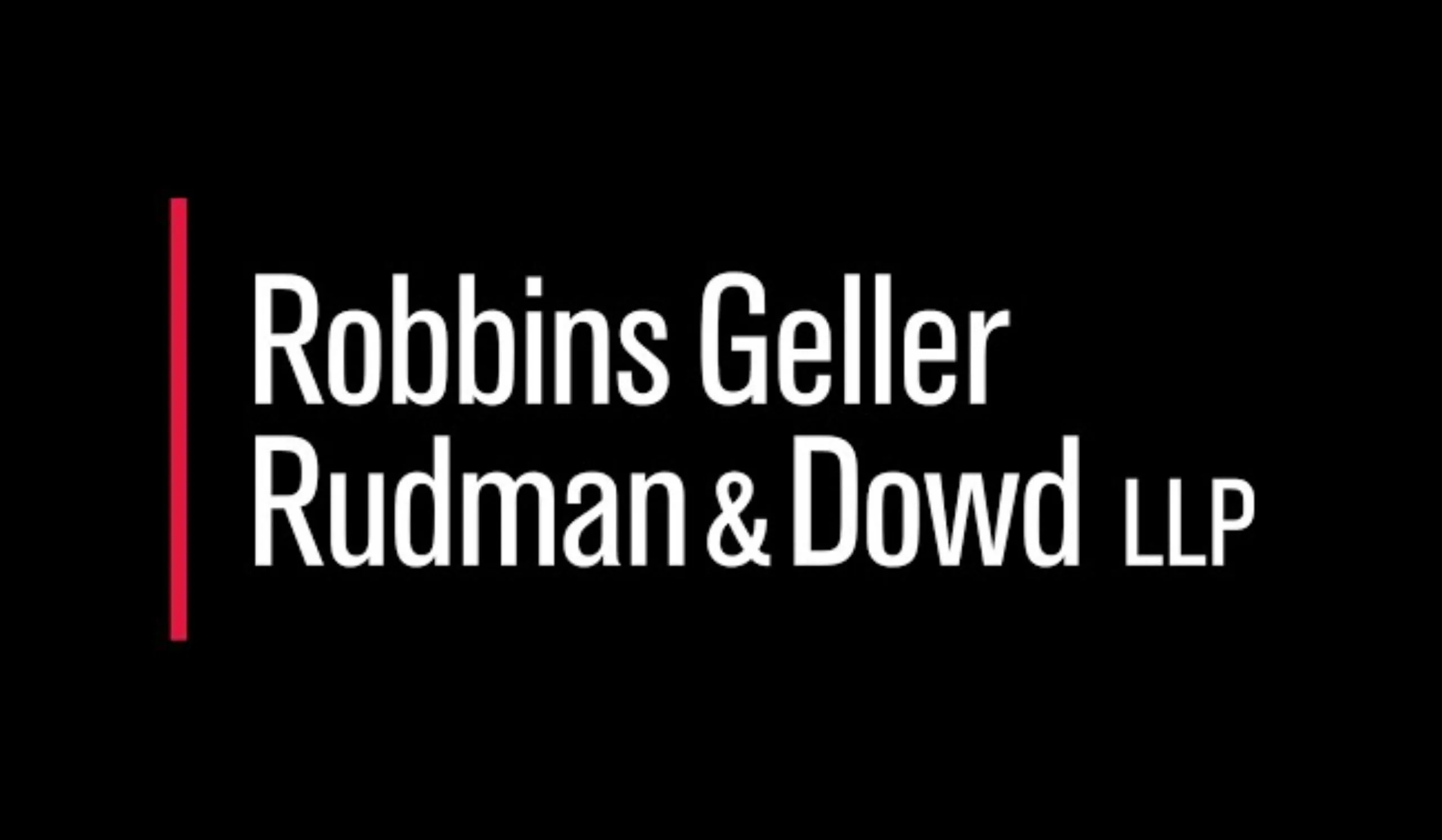This is the first in a series of articles featuring Schaeffer Cox. Click for Article 2.
–UPDATED 5/11/17–
By Ron Lee
Investigative Journalist
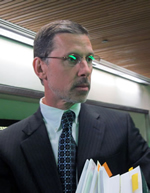
Fairbanks, AK – On January 8, 2012, US District Judge Robert Bryan sentenced 27-year-old Francis “Schaeffer” Cox to almost 26 years in prison, in most part for a conspiracy to commit murder charge the prosecution, led by Asstistant US Attorney (AUSA) Steve Skrocki, deceitfully sold to a jury as being Cox’s plan.
Now, 4 years later, revelations are exposing the system as the conspirators, having acted to frame the man who has sat confined in the Communications Management Unit (CMU) of the Federal Prison in Marion, Illinois.* The real story never made it to the people of Alaska and, more importantly, to the jury. No one heard the truth of the government’s obsession with getting rid of Cox. They never got to read the investigating special agent’s emails saying Cox was not a threat, and that he had no real “intention.” The witness intimidation; the countless hours of audio recordings of Cox refusing to use violence; all were things the government skillfully covered up in order to get their man and paint the public perception that Cox was guilty, when in fact his only guilt was to speak out against a government that proved itself to be capable of entrapment.
“This case is by far the worst travesty of justice I have encountered in my 25-year legal career.” said Fairbanks attorney Robert John who was able to exonerate Cox of all charges in the Alaska State case. Writing in a press release in 2014, John lamented, “While our tradition applauds those who stand up and exercise their constitutional rights, the government’s new definition of terrorism condemns such patriotic actions, as this young Alaskan family man Schaeffer Cox, has unfortunately learned.”
A talented speaker and 2nd Amendment advocate, Cox was a skilled orator. After the 2008 election, he was traveling outside Alaska warning citizens in fiery speeches about the tyrannical path of the federal government. His speeches drew the attention of the FBI and on February 16, 2010, the FBI initiated a preliminary investigation. The next month, on March 25, 2010, an AUSA in Anchorage, Joe Bottini, determined that Schaeffer “has not crossed the line” between “protected speech” and “actionable threat.” Again, on April 4, 2010, that opinion was independently confirmed by another AUSA, Stephen Cooper, in Fairbanks who likewise agreed that legal action was inappropriate.
By every measure Cox was an outstanding citizen who had a reputation for helping others. Yet even after soliciting the opinion of two Assistant United States Attorneys, Bottini and Cooper, who each independently determined that legal action was not appropriate, the FBI continued to “investigate” him.
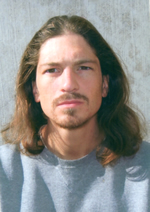
Schaeffer Cox, now 32 years old, is no longer the clean-cut “kid” he used to be – prison has changed that; his wrongful conviction has changed that. Sporting lengthy locks and a scruffy face, he looks more the part the government falsely portrayed him to be – the part of a ruffian ready to kill any and all federal, state, and local officials that stood in his way while he created a new America. It’s a part that, frankly, lacked any proof and only ever relied on circumstantial evidence and claims by government paid witnesses. But, Cox’s “investigation” and subsequent conviction have really formalized how the government attacks cases of “political” interest; those where the government decides they need to make an example out of someone, in order to make other people fall in line.
Law enforcement as a whole has moved away from the more observational type of investigating where they watch a person until that person commits a crime to a more proactive role as the one’s with the criminal plan, oftentimes selling it to unsuspecting “suspects” whose only “crime” beforehand was to speak what they believe by exercising their first Amendment rights. Quite frankly, most people only speak out against government abuse in their bedrooms and from behind closed doors; Schaeffer Cox chose the pulpit, making him the perfect patsy for the government to tell the budding patriot movement in Alaska, to back off.
Here is how it works, as it did in Cox’s case…
The government enlists the aid of individuals who are typically facing criminal charges of their own, in exchange for greatly reduced or dismissed charges, as well as pay. These people are often nefarious in their own right and have usually been involved in crimes of dishonesty. You know, the perfect type of person you’d want to be a witness against you – nothing to lose and everything to gain by framing you. These people are known as Confidential Informants (CIs) or Confidential Human Sources, and in Cox’s case there were two main CIs: Gerald “JR” Olson and William “Bill” Fulton.

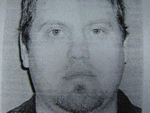
Olson is a serial criminal who first ran drugs as a trucker then later took advantage of people as a contractor. According to the Alaska Dispatch,“Gerald R. Olson, known as “J.R.” and as “Jerry,” first made headlines in 2005 when he was convicted for illegally installing septic systems in Peters Creek and Wasilla, most of which never worked. By fall 2009, he was again in trouble with the law, accused of stealing a $69,000 construction tractor.”He faced several felonies and tens, if not hundreds of thousands in restitution. It has been reported that his felonies have all been dismissed, and the restitution he faced paid for. Obviously, Olson’s part in allegedly framing Schaeffer Cox benefitted him greatly…
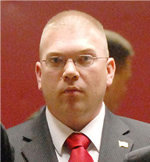
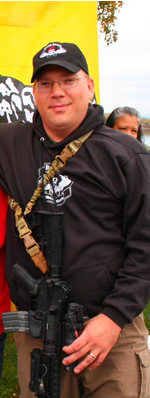
Fulton, otherwise known as “Drop Zone Bill” has been reported as having an illicit affair with FBI agent Sandi Klein, one of the agents working the Cox investigation. In October of 2010, Fulton gained fame when he falsely arrested a reporter while supposedly providing “security” at a campaign event for then U.S. Senate Tea Party candidate Joe Miller. According to witnesses, he made death threat ultimatums to Cox and others when the Cox group refused to act violently. He even admitted to saying, “I am going to slit your f’ing throat and bleed you out at my feet you son of a b….” while holding a knife to the neck of Schaeffer’s friend, Les Zerbe, who stood against Fulton saying they had no plan to act violently.
Fulton always claimed he had men and munitions ready to go and that Cox needed to get on board. Fulton made copies of recordings the government asserted did not exist and even recorded conversations with his handlers. He reportedly proved to be such an embarrassment to the government that they didn’t even call him as a witness. It has been reported that Fulton will be releasing a book of his exploits – which purportedly will be full of self-aggrandizing pomposity.
In investigations of this kind, a CI’s “handler” – the FBI agent overseeing him/her – sets the plan of attack and determines what type of information is needed to set up, entrap and bring their targeted person down. In other words, they begin the conspiracy. If this wasn’t true and their targeted person had actually already committed a crime, they would simply arrest that person and try them for that crime. Instead, they concoct a scenario and ensure the target complies with their predetermined outcome. Much of it is staged beforehand for the CI, but there are plenty of times a CI has to think on their feet and literally make something up to keep the “investigation” going forward. If an “investigation” failed, so would any hope of payment or court leniency of the CI’s charges or convictions. Much of this happened during the Federally condoned set-up of Schaeffer Cox, to the point that the plans that were prescribed to Cox and his co-defendants were, in fact, constructs of the CIs.There were many occasions during the Cox “investigation” where the CIs were told to tone it down, or, as Olson testified to during the trial, that he had been told “quite a bit” by his handler, “to not instigate stuff…” One of the biggest of these “instigations,” and what ultimately led to Cox’s conviction, was the “kill 2 for every 1” (2-4-1) plan and it’s supposed companion “hit list.”

According to Mike Anderson, a friend of Cox, the “hit list” also referred to as the “target list” was a complete fabrication by the prosecution. Anderson maintains what they claimed as a “hit list” was nothing more than the start of a database of publicly available information. Anderson claims he was the sole person to ever have possession of the database and the only time Cox ever asked him for information from it was when Cox wanted to visit and speak with a state trooper, whom he personally knew. Shortly thereafter, Cox and his wife went to the Trooper’s home and spoke with him at length. This act resulted in one of the main charges of an original state case, “conspiracy to commit murder” of that same trooper – which Anderson was also indicted on. Eventually, the conspiracy charges in the state case were dropped because prosecutors could not use the FBI’s recordings which were gathered without a search warrant, and there was no other evidence. Anderson was released as he faced no federal charges but was later subpoenaed by the prosecution to testify at Cox’s federal trial.
Anderson maintains the database wasn’t ever talked about as, or considered a “hit list” of any kind. It was as Cox put it, simply a way of being able to communicate with officials either in person, phone or by mail. Anderson claims that Cox didn’t function like a man with a plan when he saw Cox three days before the arrests saying:
“The last time I saw Schaeffer before our kidnappings [arrests], he sat down on the floor and asked me what he should do. He clearly had no plan. I told him to clear up his misdemeanor charge and disband his groups. I was upset with him for the bombastic false statements he publicly made. He had resorted to the state’s tool of deception.”
As for the trial, Anderson asserts that he was waiting for more questions from the defense counsel during cross-examination, which ultimately never came. Anderson says he never got the chance to fully explain to the jury what the database was and how it had nothing to do with anything called “2-4-1”. Anderson denies having ever heard of 2-4-1 until he was in jail along with Cox. For his failure to clarify that there was never a list or a plan, Anderson believes Cox’s attorney, Nelson Traverso, completely mishandled Cox’s case to the point where Cox should have a wonderful Ineffective Assistance of Counsel appeal.
As for the 2-4-1 plan itself, which greatly contributed to the conviction of Cox, and made infamous by AUSA Skrocki, recent information has surfaced regarding the origins of the plan, and it didn’t come from Schaeffer Cox. It was a plan used as a “war of words” during the Freeman Ranch standoff in Montana, years earlier in 1996. It was there that [CI] Gerald Olson, a young man, would first hear this rhetoric, only to use it these many years later and attribute it to Schaeffer Cox.
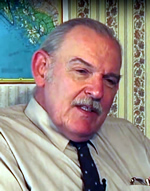
According to Norm Olson, co-founder of Alaska Citizens Militia and who, in 1996, was in Montana to support the Freeman in their 81-day stand-off with the FBI, “I first met [CI] Gerald Olson [no relation] during the Montana Freeman Standoff. We used 2-4-1; 3-4-1; 4-4-1 as a propaganda tool because we were facing another Waco-like situation. The only way we felt we could stop the federal forces was to threaten them with retaliation, with reprisal, with retribution. And they didn’t attack that ranch.”
This proves that CI Olson, who used this rhetoric before, pushed his own preemptive agenda as though it was Cox’s plan. Cox had never heard, let alone used this language before! I wonder how the jury would have reacted had they been informed of that dirty little secret?
On February 19th, 2011 – 5 days after a bench warrant was issued for Schaeffer Cox when he did not show up for a misdemeanor hearing on a state issue, a marathon six-hour meeting between Cox and others ensued where CI Olson again pushed the 2-4-1 plan, while he clandestinely recorded the entire meeting, yet the jury never got to hear the portion where Schaeffer Cox summarily rejected the idea of 2-4-1 saying:
“I’m not motivated by wanting to see their heads roll. I’m motivated by wanting my family to live free and prosperous and happy.
“And with what you [CI Olson] were talking about for the 2-4-1 and stuff like that … or any sort of very aggressive, offensive maneuver … seems like to me, given the circumstances, that that would be more along the lines of looking for a fight rather than strategically and prudently waging a war … at least right now, and I can’t speak to the future. But I can say that I think for right now, a 2-4-1 is — is — would — would be running out ahead of the scale and sacrificing our self to no avail.
“I lost my house, my business, my whole fortune… And I could, if I was looking for a fight and I was feeling vengeful, which what’s wrong with feeling vengeful, man? We’ve been wronged. I could go out and I could sock it to them, and that would satisfy my animalistic reaction … But it would — it would be a detriment to the war … Because only when there is no future and there is no hope for my wife and for my children can I then spend myself … in costing the enemy. Because costing the enemy is not my objective. I would forgive them and have all sorts of redemption and go to a picnic with them if they’d leave me alone. You know, I don’t have hatred towards them.”
Definitely not a statement made by a man who allegedly conspired to kill people in cold blood.
AUSA Skrocki tried desperately to shield the government from its practice of entrapment during his closing arguments, talking about how the government didn’t do this, the paid informant witnesses didn’t do that; the bottom-line is, it was a conspiracy that first and always involved Fulton and Olson, the government CIs, not Schaeffer Cox. It was their conspiracy and they continually pushed it on Cox and his friends. And, without any question whatsoever, they were instructed to do so by the Department of Justice!
If there is any question the government acted to entrap Schaeffer Cox, you only have to refer to their own determination as to what entrapment is. According to the Offices of the United States Attorneys:
Entrapment is a complete defense to a criminal charge, on the theory that “Government agents may not originate a criminal design, implant in an innocent person’s mind the disposition to commit a criminal act, and then induce commission of the crime so that the Government may prosecute.” Jacobson v. United States, 503 U.S. 540, 548 (1992). A valid entrapment defense has two related elements: (1) government inducement of the crime, and (2) the defendant’s lack of predisposition to engage in the criminal conduct.Mathews v. United States, 485 U.S. 58, 63 (1988). Of the two elements, predisposition is by far the more important.
Cox did not have the predisposition to engage in the violence the government claims. The facts are indisputable. When pressed to act violently by the government’s CIs, he always sided with his moral compass, and never agreed to it.
Let’s face it, rhetoric drives society. It builds victors and villains based solely upon the political interpretation of that speech – the stance of the day carries with it the full force of “justice.” But when does protected speech become an actionable offense? When do our spoken thoughts become crimes?
When the government says it does, as was evident in the Cox case – and the jury bought it.
Bottom line, Cox’s speeches, not his actions, garnered the attention of the FBI – that is a fact. If his words didn’t cause them any alarm, as Skrocki tried to allude to in his closing arguments at trial, Cox would have never been at the center of an investigation to begin with. Cox’s case really was about the government stifling his 1st Amendment rights.
There was never a plan to initiate violence, as stated over and over as Cox continually would say things like, “we’re not doing a Rambo, we’re pulling a Gandhi.” The only times Cox stated violence could potentially be in order were in reference to moments where it would be defensive in nature, requiring an outside action for them to be actionable. As an example, “if someone pulls a gun on me, I’m going to kill them.” It is a statement that does not suggest you are planning on murdering people. It requires an action for you to take action. Also, we’ve all said something like, “I’ll kill him if he does ____.” Did you mean it, that you’d actually kill this person? Of course not. If everyone who used this type of language was put in prison, there would be no one left who was free! Even if you are a gun owner, or have a knife in your kitchen drawer when you make an outlandish statement like this, does that make your verbalization a real tangible threat? Not hardly, unless of course a deceitful and dangerous prosecutor learns of it.
Also, ask yourself: how far would you go to protect your family? Would it be fair to assume you would say you’d kill to keep them safe? Now imagine if after you said you would, out loud to a friend, you were arrested and convicted of conspiracy to commit murder… That is just about how outlandish the case against Schaeffer Cox was.
The fact is, the jury didn’t hear the majority of the audio recordings in Cox’s case. They only heard a few cherry-picked moments that painted him in a bad light. They never got to listen to the threats Cox faced by Fulton and others if he didn’t go along with their plans. Nor did the jury get to read the emails sent by FBI Special Agent Sutherland that assessed Cox as not being a threat.
The jury also never heard that the conspiracy charges weren’t in the initial indictment against Cox and that the Government had offered Cox a deal on much lesser charges.
“Had I known then what I know now, I would have accepted a plea deal on one or two of the minor weapons charges, which is what the government tried to get me to do. This would have avoided the conspiracy and solicitation to murder counts altogether.” writes Cox for the website freeschaeffercox.com.
For the prosecution to prove the conspiracy, however, the jury had to be convinced that Cox wanted to kill someone, sometime in the future, without any real, non-hypothetical specifics.
A non-specific threat was exactly what the Skrocki prosecution deceitfully and successfully sold to the jury by disallowing a vast majority of its own recordings from being heard, and reports written by its own investigating special agents from being read. They kept the truth from the jury; the truth that Schaeffer Cox had been recorded wanting to leave Alaska with his family and keep away from Bill Fulton; not wage war or randomly kill people as they asserted, as the below FBI dispatch confirms:
FBI Dispatch Friday, March 04, 2011 5:33:00 PM
SC [Schaeffer Cox] is not willing to meet with CHS-2 [Fulton]. Does not want him [Fulton] to know he is still in Fairbanks. Wants CHS-I [Olson] to broker deal. SC willing to meet ‘trucker’ to discuss transport.
–Special Agent Rick Sutherland
So much information was withheld from the jury that US~Observer is creating an extensive on-line-only article outlining all of the evidence. In the near future, look for “The Conspiracy to Entrap Schaeffer Cox.”
“At my trial, the prosecution just told a scary story about what I might have done some day if they hadn’t ‘taken me out.’ Then they tried to block the jury from seeing the truth about what I ACTUALLY DID DO in real life, i.e. told the agent provocateurs ‘NO,’ then packed up my family to move out of the country to get away from the coercive CIs and their death threat ultimatums.” – Schaeffer Cox
Let’s face it, pre-crime or “thought crime” has become punishable by imprisonment in this “modern” America where every expression is steeped in, what a psychiatrist coined in 1970 as, microaggressions. The government is now able to determine who and what should be targeted just by the words and expressions people use, as evidenced by the Schaeffer Cox case and so many others that follow this cookie-cutter strategy of; create the crime, provide the contrived motivation, supply the tools, arrest, feed the jury full of deception and then send your target to a prison cell. So, look out Facebook users, your words just might hurt you because it all starts there!
Over the last several years there has been a surge of government distrust, especially of the police. In this day and age of ready video recording devices (smartphones), the police are under constant scrutiny of their actions. What these countless hours of video have shown is that the system as a whole is broken. Not all police are bad, true, many are outstanding, but even if you are a good cop and the system is rotten, how long does it take before the system taints what you do? Bottom line, the US Justice System no longer functions to dispense justice, rather it is designed to fine and incarcerate – kill if need be. The perception of your safety is all that matters.
Fortunately for Schaeffer Cox, the blinders are coming off and the truth can finally be seen for what it was; the government conspiring to entrap a young, idealistic, charismatic, patriot who believed that he had a right to stand up to their overreach.

It’s time to call them out and hold them accountable. It’s time to bring Schaeffer Cox home.
Karen Loeffler was the US Attorney for the District of Alaska and was ultimately responsible for Schaeffer Cox’s incarceration. It was under her watch that this travesty took place, and it should have fallen on her to rectify it. However, Loeffler was one of the US Attorneys fired when Trump got into office. The current US Attorney for Alaska is Bryan Schroder. Call his office at (907) 271-5071.
Editor’s Note: The US~Observer has been vigorously investigating the Schaeffer Cox case. There are hundreds of hours of audio, video and documentation that show Schaeffer Cox only ever spoke in a defensive manner, especially regarding his family. Cox was quite literally being hunted by the government for imprisonment, and he knew they were investigating him! Let that sink in. Why would he attempt a plan that is not only foolish, it would never have changed anything and only harmed the lives of the one’s he loved. If anything can be said about Schaeffer Cox, it can be said that he isn’t stupid.
The fact is, the jury in the Cox case was completely deceived by a prosecutor who twisted the manufactured “evidence” he cunningly fed to that naïve jury, just as he and others had done in other cases such as the infamous Operation Polar Pen convictions which were ultimately thrown out or vacated like Senator Ted Stevens’. Furthermore, Cox had absolute ineffective assistance of counsel, and the corrupted court condoned this complete mockery of justice!
Should you have any information regarding the Schaeffer Cox case, contact us immediately. We are especially interested in anyone who had dealings with Gerald “JR” Olson especially if Olson paid you restitution and/or Drop Zone owner Bill Fulton. If you were a juror in this case and you now see that you were deceived, please contact us immediately by calling 541-474-7885 or by email at editor@usobserver.com.
* Please read “CMUs: The Federal Prison System’s Experiment in Social Isolation” for a better understanding of what a CMU is and what Cox has had to endure. Cox was released into the general population at the beginning of March 2016, and is no longer in the CMU.
Article of interest: Entrapment Approved by Appeals Court
UPDATE 3/29/16 – William Fulton, one of the CIs in the Schaeffer Cox case, referenced the US~Observer on Twitter saying, “these guys dint interview anybody from the other side they are biased and ill informed.”
The US~Observer retorted with, “Interesting how you didn’t claim that it wasn’t true. We had your words already – on the record, and recorded.”
Since this initial exchange, Fulton has continued his tirade on Twitter trying to protect his “legacy” and make claims that the volumes of recordings are somehow flawed, and that his recollection and word is more accurate than what is already on the record.

